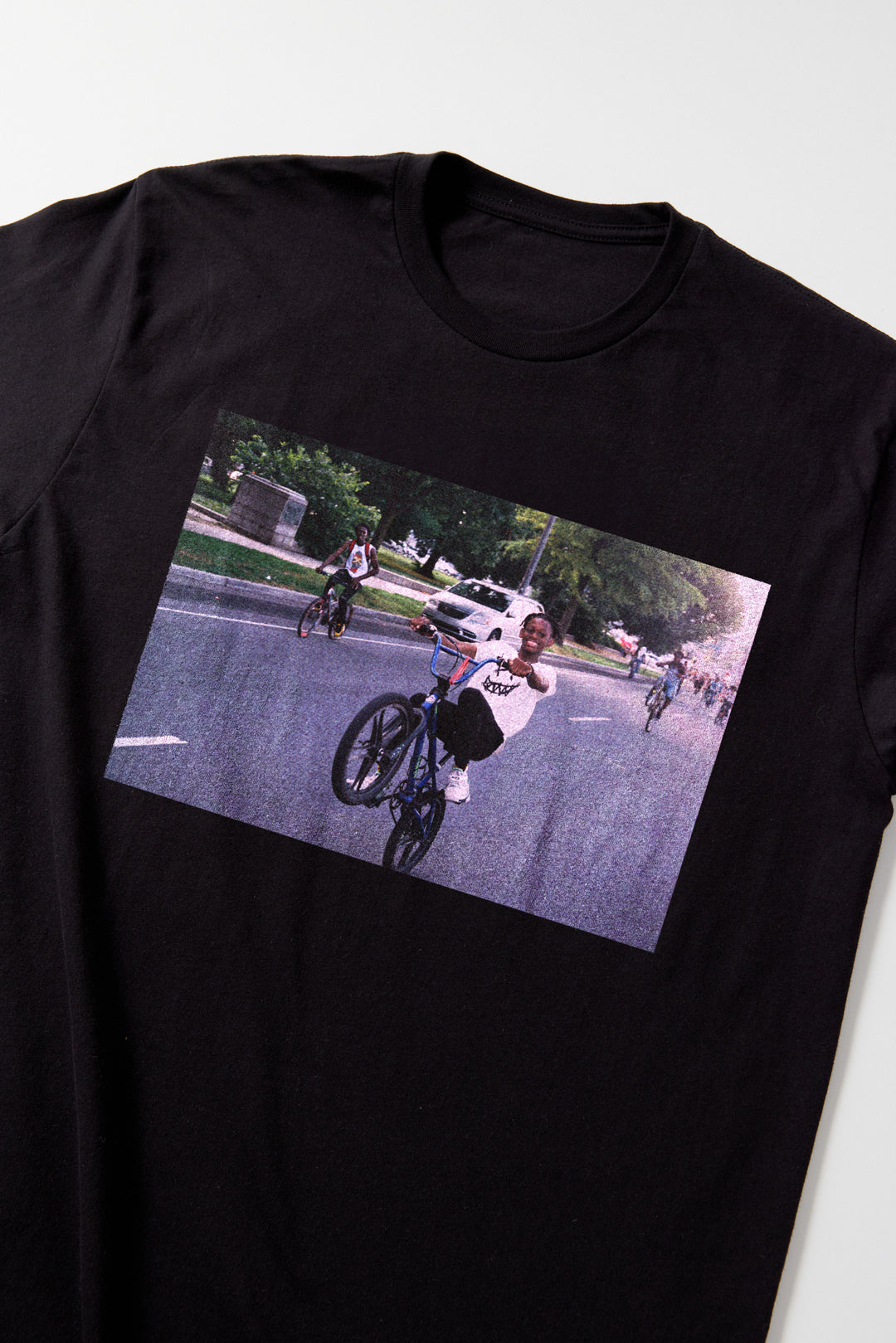The Black Panthers: Vanguard of the Revolution

"The Black Panthers: Vanguard Of The Revolution"
By Shanice Brim
Whenever Black America is in crisis mode there’s a reemergence of interest in Black Culture, history, pride, and nostalgia. We’re currently experiencing such a resurgence in the wake of Ferguson. We’ve pulled Black films and TV shows like Black-Ish, Selma, How to Get Away With Murder, Empire, Straight Outta Compton, Best Man Holiday, and more to the top. Earlier this year saw the release of Netflix’s documentary about legendary singer/activist Nina Simone; 3 ½ Minutes, 10 Bullets, the documentary about the murder of Jordan Davis, is informing audiences and earning rave reviews on the festival circuit; HBO just released a short documentary with President Obama about mass incarceration and the “War on Drugs”; and just last week I sat in Film Forum to see Black Panthers: Vanguard of the Revolution.
My initial reactions to the film were elation. I’m a fan of the Black Panther Party. I’ve been studying them for the past couple of years: from reading the works of affiliates like Angela Davis to viewing the Black Power Mixtape to reading the autobiography of Elaine Brown who was interim president of the Party during Huey Newton’s exile. As someone who loves the party, problems and all, seeing the Panthers in action is exhilarating. Director, Stanley Nelson, uses this to his advantage. He packs the film with afrocentric tunes like The Last Poets’ “Black Is” which plays over images of Emory Douglas’ artwork for the Black Panther Newspaper. You see images of beautiful Black people with their natural hair out, fists raised, dancing, enjoying each other. He uses the famous clip of Kathleen Cleaver talking about the importance of natural hair. It’s electrifying. I couldn’t keep myself from smiling in the theatre. Seeing these images, paired with the music, and watching the interviews with people I’d read about in books had me in Black Power heaven.
However, the film takes a turn. We know about the demise of the Party and there’s no use in sugar coating that. My issue comes in when Nelson re-introduces a hitherto imprisoned Huey Newton. I will admit that Newton was an immensely complicated man. He was both a genius and a nightmare. From what I’ve learned about Huey, I see a man who created something that spoke to the souls of a downtrodden and frightened people. Newton saw a problem and not only did he set out to fix it. . . for a while he was doing exactly that. The survival programs fed, clothed, and provided healthcare for Black people in communities across the country. Newton did what the government would not and in doing so he caused Black people to question how if a man from the ghettos of Oakland could do all this. . . what was stopping the government. None of this is included in the film. The survival programs, which were his idea and made up a bulk of the Panthers duties, seem almost like an afterthought.
Newton received no mental help and took no breaks after his traumatizing experience in prison in which he spent a good portion of it in something called The Soul Breaker. Newton describes Soul Breakers here:
I’m of the opinion that Newton suffered from undiagnosed PTSD. And the film highlights all of his erratic behavior and his drug addiction without making note of any of this. But Nelson makes sure to include a former Black Panther calling him a maniac and letters from Black Panthers explaining why they left the Party in a montage. . . all of which is tied to him. Newton was a man who’d struggled with vicious racism and poverty all his life. He was then thrown into something that became bigger than him and had a much greater personal, mental, and physical cost than he’d prepared for. He was then thrown into a prison where he suffered cruel and unusual punishment. I don’t believe the film was fair to Newton or nuanced in its representation of Newton in the slightest. Elaine Brown covers more dishonest moments in her review of the film here.
And this brings me to the end of the movie. There’s absolutely no redemption. The film basically ends by telling the audience that Newton came out of prison, ruined the party, and died a drug addict. That everyone started dying and fighting each other, that the government did it’s job, and then Eldridge Cleaver went off and became a Republican. Now, was Newton erratic and sometimes abusive? Absolutely. Was there sexism in the party? For sure. Did Eldridge become a Republican? Regrettably. But there’s more to this story than that. There’s more to the work than that. The Black Panthers proved something one of today’s most visible activists, Deray McKesson, puts aptly, “White supremacy is more afraid of Black unity than Black rage.”
The Black Panther Party showed Black people hope, unity, beauty and pride. They also showed us how terrified the government is of all those things. The Black Panther Party has given us some of the most brilliant minds in race, gender, and class theory- in social justice, period. People still pack into classrooms and auditoriums to hear them speak. Today, I bought Assata Shakur’s autobiography. I could not find it in it’s usual place. I asked a girl at the front desk and she led me to the textbook section of the store where it sat with the other coursebooks. Last week, I stepped off the L train in Brooklyn and saw a beautiful portrait of Angela Davis.

Angela Davis, Wheat Paste, Brooklyn
Black people still throw their fists in the air in salute of one another. We still call police officers pigs. Milllenials are walking around in “Assata is welcome here” and “Assata taught me” shirts. Vic Mensa showed up at this year’s VMAs in an outfit calling for Assata’s freedom. He also has a Free Huey tattoo. He is only 22. The Party ended 32 years ago.
The Black Panthers did that. In fact, the Black Panthers are still doing that. Just yesterday, Angela Davis gave a talk in Washington D.C. with today’s Black Lives Matter activists. To end the film in such hopelessness and to make it seem like these people squandered their lives on a failed pipe dream is a disservice to them and to us. Not only that, it’s dishonest. Fred Hampton’s words still ring true today, “You can kill a revolutionary but you can’t kill a revolution.” The children and grandchildren of those revolutionaries still sing. We still read, speak, hear, and are inspired by their words and actions and they are as timely as ever. To portray it any other way is sacrilege. Check out The Black Power Mixtape instead.

